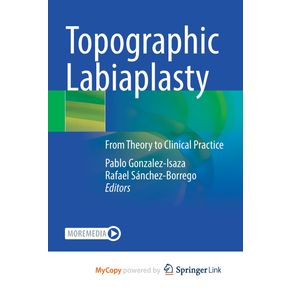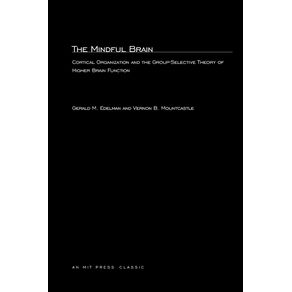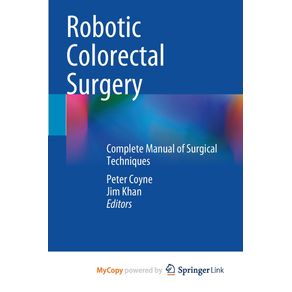De: R$ 0,00Por: R$ 1.135,07ou X de
De: R$ 0,00Por: R$ 1.135,07ou X de
| Selo | Springer Nature B.V. |
|---|---|
| Edição | 0 |
| Idioma | Inglês |
| Autores | Vinko V. Dolenc |
| Acabamento | Capa Comum |
| Quantidade de Páginas | 360 |
| Origem | Literatura Estrangeira |
 Mudras Que Curam
Mudras Que Curam
Pensamento
R$ 42,00 R$ 34,44 à vista De tentante a gestante: Como a medicina chinesa iluminou minha caminhada á maternidade
De tentante a gestante: Como a medicina chinesa iluminou minha caminhada á maternidade
Editora Viseu
R$ 65,90 à vista Cigarro
Cigarro
Editora Viseu
R$ 52,90 à vista Drogas, Mitos e Realidades
Drogas, Mitos e Realidades
Editora Viseu
R$ 58,58 à vista Envelhecimento e saúde; Programa de atividade física
Envelhecimento e saúde; Programa de atividade física
Editora Viseu
R$ 57,90 à vista O cérebro 4.0: Como usar sua mente para uma vida mais saudável, feliz e próspera
O cérebro 4.0: Como usar sua mente para uma vida mais saudável, feliz e próspera
Editora Viseu
R$ 38,90 à vista Topographic Labiaplasty
Topographic Labiaplasty
Springer Nature B.V.
R$ 343,04 ou até 3x sem juros Neuroscience and the Problem of Dual Use
Neuroscience and the Problem of Dual Use
Springer Nature B.V.
R$ 345,06 ou até 3x sem juros Clinical Guide to Heart Transplantation
Clinical Guide to Heart Transplantation
Springer Nature B.V.
R$ 331,76 ou até 3x sem juros Keratoconus
Keratoconus
Springer Nature B.V.
R$ 373,34 ou até 3x sem juros The Mindful Brain
The Mindful Brain
Random House
R$ 166,18 ou até 3x sem juros Uterine Therapeutics
Uterine Therapeutics
Legare Street Press
R$ 334,09 ou até 3x sem juros The Human Connectome
The Human Connectome
Springer Nature B.V.
R$ 341,59 ou até 3x sem juros Womens Mood Disorders
Womens Mood Disorders
Springer Nature B.V.
R$ 335,16 ou até 3x sem juros The Perspectives of Psychiatry
The Perspectives of Psychiatry
Hopkins Fulfillment Service
R$ 279,46 ou até 3x sem juros Mudras Que Curam
Mudras Que Curam
Pensamento
R$ 42,00 R$ 34,44 à vista Detox essencial
Detox essencial
Editora Viseu
R$ 31,90 à vista Guia simplificado para cuidadores de idosos e acompanhantes
Guia simplificado para cuidadores de idosos e acompanhantes
Editora Viseu
R$ 34,90 à vista Alquimia da alma
Alquimia da alma
Editora Viseu
R$ 56,90 à vista A alma do cuidador
A alma do cuidador
Editora Viseu
R$ 49,90 à vista Novos hábitos de vida com Dr. Rafael Angelim
Novos hábitos de vida com Dr. Rafael Angelim
Editora Viseu
R$ 35,90 à vista TDAH Descomplicado: Tudo que os pais devem saber para ajudar seus filhos
TDAH Descomplicado: Tudo que os pais devem saber para ajudar seus filhos
Editora Viseu
R$ 45,90 à vista Envelhecimento e saúde; Programa de atividade física
Envelhecimento e saúde; Programa de atividade física
Editora Viseu
R$ 57,90 à vista Understanding Cancer
Understanding Cancer
Springer Nature B.V.
R$ 316,01 ou até 3x sem juros Clinical Guide to Heart Transplantation
Clinical Guide to Heart Transplantation
Springer Nature B.V.
R$ 331,76 ou até 3x sem juros CÓMO MATAR DE HAMBRE AL CÁNCER
CÓMO MATAR DE HAMBRE AL CÁNCER
Antonio Martínez
R$ 149,83 ou até 2x sem juros Mastering the Art of Patient Care
Mastering the Art of Patient Care
Springer Nature B.V.
R$ 342,12 ou até 3x sem juros Robotic Colorectal Surgery
Robotic Colorectal Surgery
Springer Nature B.V.
R$ 349,18 ou até 3x sem juros Fundamentals of Critical Care
Fundamentals of Critical Care
John Wiley & Sons
R$ 392,97 ou até 3x sem juros The Perspectives of Psychiatry
The Perspectives of Psychiatry
Hopkins Fulfillment Service
R$ 279,46 ou até 3x sem juros Ayurveda: A ciência da Autocura
Ayurveda: A ciência da Autocura
Editora Ground
R$ 58,90 à vista Cigarro
Cigarro
Editora Viseu
R$ 52,90 à vista Alquimia da alma
Alquimia da alma
Editora Viseu
R$ 56,90 à vista A alma do cuidador
A alma do cuidador
Editora Viseu
R$ 49,90 à vista Envelhecimento e saúde; Programa de atividade física
Envelhecimento e saúde; Programa de atividade física
Editora Viseu
R$ 57,90 à vista O cérebro 4.0: Como usar sua mente para uma vida mais saudável, feliz e próspera
O cérebro 4.0: Como usar sua mente para uma vida mais saudável, feliz e próspera
Editora Viseu
R$ 38,90 à vista Vagus Nerve
Vagus Nerve
Draft2Digital
R$ 136,71 ou até 2x sem juros Neuroscience and the Problem of Dual Use
Neuroscience and the Problem of Dual Use
Springer Nature B.V.
R$ 345,06 ou até 3x sem juros Carnivore Code
Carnivore Code
HARPERCOLLINS
R$ 167,90 ou até 3x sem juros CÓMO MATAR DE HAMBRE AL CÁNCER
CÓMO MATAR DE HAMBRE AL CÁNCER
Antonio Martínez
R$ 149,83 ou até 2x sem juros Pattern Analysis for Histopathologic Diagnosis of Melanocytic Lesions
Pattern Analysis for Histopathologic Diagnosis of Melanocytic Lesions
Springer Nature B.V.
R$ 332,83 ou até 3x sem juros Medical Terminology
Medical Terminology
MedicFluent
R$ 125,20 ou até 2x sem juros Womens Mood Disorders
Womens Mood Disorders
Springer Nature B.V.
R$ 335,16 ou até 3x sem juros Medicalization of Society
Medicalization of Society
Hopkins Fulfillment Service
R$ 253,69 ou até 3x sem juros Bee Venom Therapy
Bee Venom Therapy
Repro India Limited
R$ 81,19 à vista